Leopards
What is a leopard?
Leopards (Panthera pardus) are some of the most widely distributed big cats, known for their strength, stealth, and striking spotted coats. They have a sleek, muscular build with long limbs and powerful jaws, allowing them to take down prey much larger than themselves. A leopard’s golden-yellow fur is covered in black rosettes, which help them blend into their surroundings, whether they live in dense foliage or open savannah.
Leopards live across parts of Africa and Asia in various habitats, from rainforests and grasslands to deserts and high-altitude mountain ranges. This adaptability extends to their diet—they are opportunistic hunters and feed on anything from antelope and deer to birds, reptiles, and fish.
They are also known for their unique hunting behavior—leopards use stealth and patience to ambush their prey before delivering a powerful bite to the throat. They often drag their kills into trees to keep them safe from scavengers like hyenas and lions.
Unlike lions, leopards are solitary and prefer to live alone, marking their territories with scent to keep others away. They only come together to mate, and after a gestation period of about three months, a female will give birth to two or three cubs. The cubs stay with their mother for about two years, learning survival skills before venturing off on their own.
Leopards play a vital role in maintaining healthy ecosystems. As top predators, they help control prey populations, preventing overgrazing and keeping food chains balanced. This indirectly supports plant growth, soil health, and carbon storage, which plays a part in mitigating climate change.
Protecting leopards not only preserves biodiversity but also keeps entire ecosystems functioning properly.
What is a leopard’s scientific name?
A leopard’s scientific name is Panthera pardus, which roughly translates to ‘powerful spotted beast’. Panthera comes from the Greek word ‘panther’, meaning ‘a beast of all beasts’, while pardus is derived from the Greek word for spotted, referring to the leopard’s distinctive coat pattern.
Leopards belong to the genus Panthera, a family comprised of the five big cat species: the jaguar, lion, snow leopard, tiger, and leopard.
There are nine subspecies of leopards, each with their own scientific name:
- African leopard: Panthera pardus pardus
- Indochinese leopard: Panthera pardus delacouri
- Indian leopard: Panthera pardus fusca
- Sri Lankan leopard: Panthera pardus kotiya
- Javan leopard: Panthera pardus melas
- Arabian leopard: Panthera pardus nimr
- Amur leopard: Panthera paruds orientalis
- Persian leopard: Panthera pardus tulliana
Are leopards endangered?
As a species, leopards are classed as vulnerable by the IUCN, with a declining population.
Some subspecies are more endangered than others, with five considered endangered. The Amur leopard is the rarest leopard subspecies on earth and is classified as critically endangered, with only 130 mature individuals left in the wild. The Arabian and Indochinese leopards are also classed as critically endangered, with very small wild populations. Indian leopards are the largest subspecies by population, though are still classed as near threatened, with around 15,000 individuals left in the wild.
Leopards face severe threats from habitat loss, poaching, poorly regulated trophy hunting, and declining prey populations. As their territories shrink and food sources disappear, they are increasingly forced into conflict with humans.
Where do leopards live?
Leopards once inhabited a vast range across the globe, from Africa and the Middle East to East Asia. However, habitat loss, poaching, and human-wildlife conflict have drastically reduced their numbers. By 2019, leopards had lost three-quarters of their former range.
Today, leopards are found mainly in sub-Saharan Africa, Iran, India, China, and Southeast Asia. One tiny, isolated population of leopards survives in the Atlas Mountains in North Africa.
Leopards are incredibly adaptable, which has helped them survive in various habitats, including dense tropical rainforests, dry deserts, savannahs, grasslands, and even mountainous regions up to 5,200 metres (17,000 feet) in elevation. In Africa, they thrive in the savannahs of Kenya and South Africa, while in Asia, they are found in the forests of India and the rugged terrain of the Himalayas.
Unlike other big cats, leopards have been known to inhabit areas close to human settlements, though this often leads to conflict with humans, threatening their populations.
Threats
While leopards are highly adaptable big cats, they face numerous threats that are pushing populations into decline. Habitat loss, poaching, poorly regulated hunting, and the loss of prey all contribute to the shrinking overall range and population numbers of leopards worldwide.
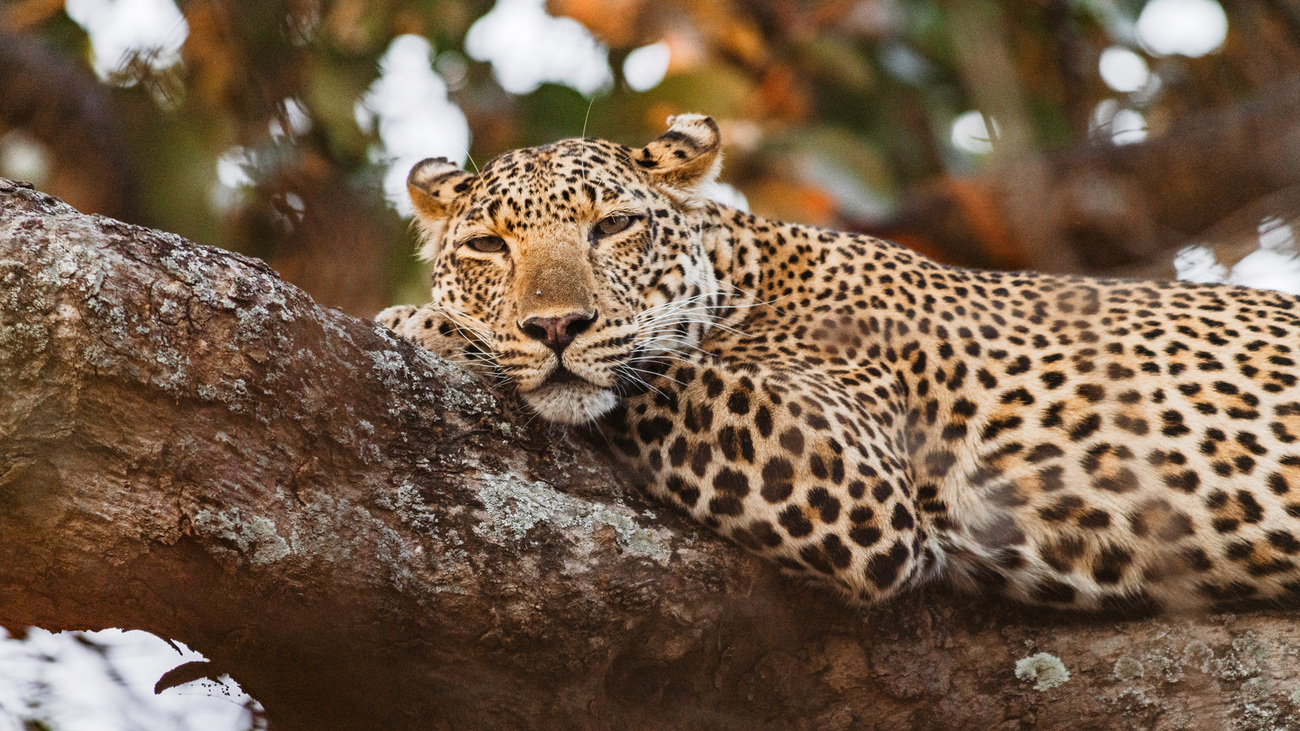
Habitat loss and fragmentation
Leopard habitat is disappearing at an alarming rate: since 2016, their range has declined by 11%, with significant losses in Africa, the Middle East, and Southeast Asia.
Expanding agriculture, deforestation, and urban development have all contributed to this decline. Thankfully, some conservation efforts have paid off in protecting their habitats, with slight range increases in India and the Russian Far East.
Fragmentation is also a major concern. Leopards need large territories for hunting and breeding, but roads, farms, and settlements divide their habitats into smaller, isolated patches. This makes it harder for them to find mates, access food, and avoid humans.
Poaching and illegal wildlife trade
Leopards are frequently targeted for their skins, bones, and other body parts, which are highly valued in illegal wildlife markets. Their fur and body parts are often prized as symbols of wealth and status while their bones, teeth, and claws are sold as substitutes for tiger parts. A 2020 report found that at least 24 Chinese pharmaceutical companies listed leopard bones as an ingredient in their traditional medicines.
Despite legal protections in many countries, poaching remains widespread, driven by high demand and weak law enforcement.
Trophy hunting
In some regions, leopards are legally hunted as trophies. While regulated hunting can, in theory, generate funds for conservation, poor oversight has led to overhunting in certain areas, contributing to population declines.
Some countries have imposed temporary bans on leopard trophy hunting, but these bans have often been lifted, sometimes without clear evidence of population recovery.
Declining prey population
Leopards rely on a steady supply of prey, but in many areas, their food sources are disappearing. Unsustainable bushmeat hunting has caused prey populations to plummet, with some regions experiencing an 85% decline in key prey species. Without sufficient food, leopards are forced to venture closer to human settlements, where they may hunt livestock, increasing the risk of retaliation from farmers and herders.
FAQs
Leopards are fascinating big cats with incredible strength, adaptability, and stealth. Here are some fun facts and answers to common questions about these amazing creatures.
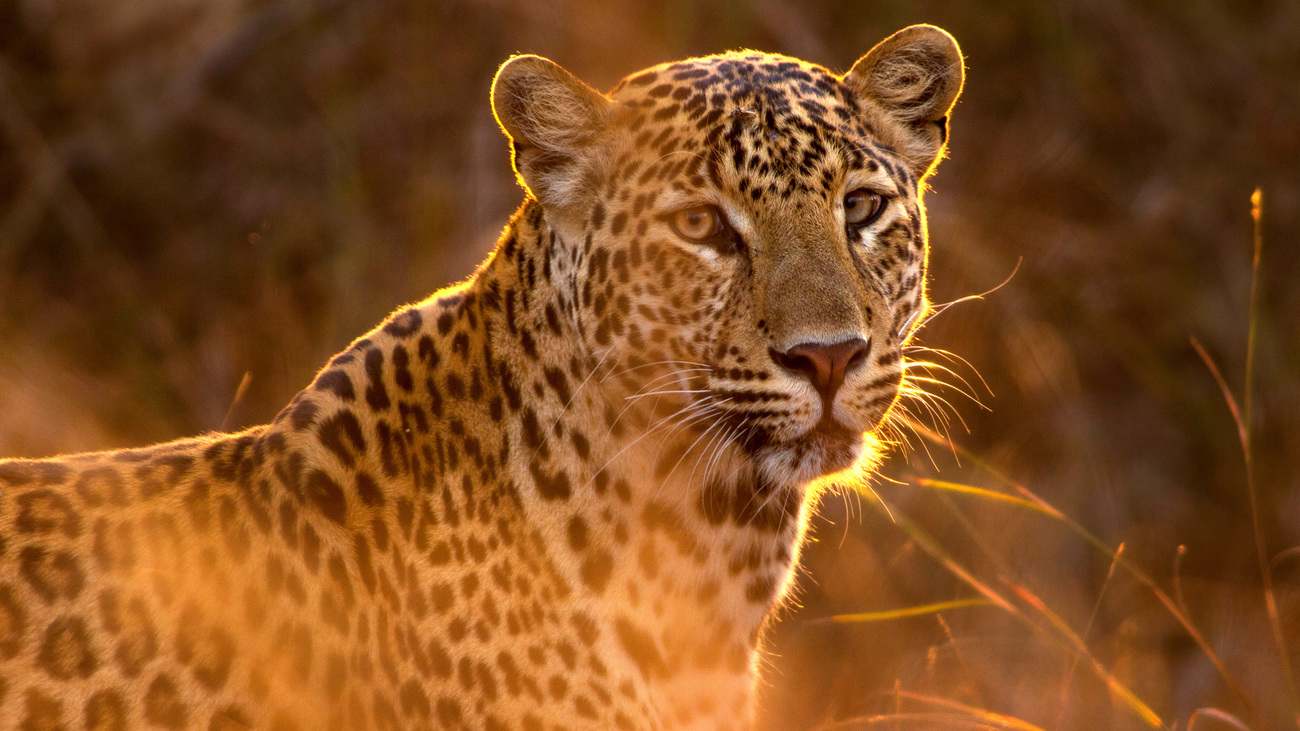
Do leopards purr?
Unlike house cats and smaller felines, leopards cannot purr. They also do not meow; they can only roar.
Are leopards herbivores? What do leopards eat?
Leopards are not herbivores. They are carnivores and rely on meat to survive. They have a varied diet and hunt a wide range of prey, including antelope, deer, wild boar, and smaller animals like birds, rodents, and reptiles.
Leopards are also opportunistic hunters, so they will eat whatever is available, including fish, insects, and even livestock if wild prey is scarce. Their powerful jaws and sharp teeth help them take down and consume their prey efficiently.
What genus are leopards in?
Leopards belong to the genus Panthera along with the other four big cat species (lions, tigers, snow leopards, and jaguars).
Do leopards live on their own?
Leopards are solitary animals and prefer to live and hunt alone. Each leopard has its own territory, which it marks with scent and claw marks to warn others to stay away. The only time leopards interact is during mating or when a mother raises her cubs.
Unlike lions, which live in prides, leopards are independent and rely on their own individual strength to survive.
How long do leopards live?
In the wild, leopards typically live between 12 and 15 years. In captivity, where threats are minimal, they live up to 23 years.
What is a group of leopards called?
A group of leopards is called a leap––named for their tendency to leap and jump to capture prey, especially birds.
Are leopards and jaguars the same?
Leopards and jaguars may look similar, but they have significant differences. Leopards are found in Africa and Asia, while jaguars live in the Americas.
Jaguars are larger and more muscular, with a stockier build and a stronger bite. Leopards are more agile climbers, often dragging their prey into trees, whereas jaguars are stronger swimmers and frequently hunt in water.
Their spot patterns also differ. Jaguars have larger, more complex rosettes with central spots, while leopards have smaller, simpler rosettes without central markings.
Are panthers and leopards the same?
The term ‘panther’ does not refer to a separate species but is a general name for big cats with black fur.
A black panther in Africa or Asia is a black leopard, while in the Americas, a black panther is technically a black jaguar.
These dark-coloured big cats have the same physical traits and behaviors as their spotted counterparts, but their black fur helps them blend into dense forests, giving them an advantage when hunting at night.
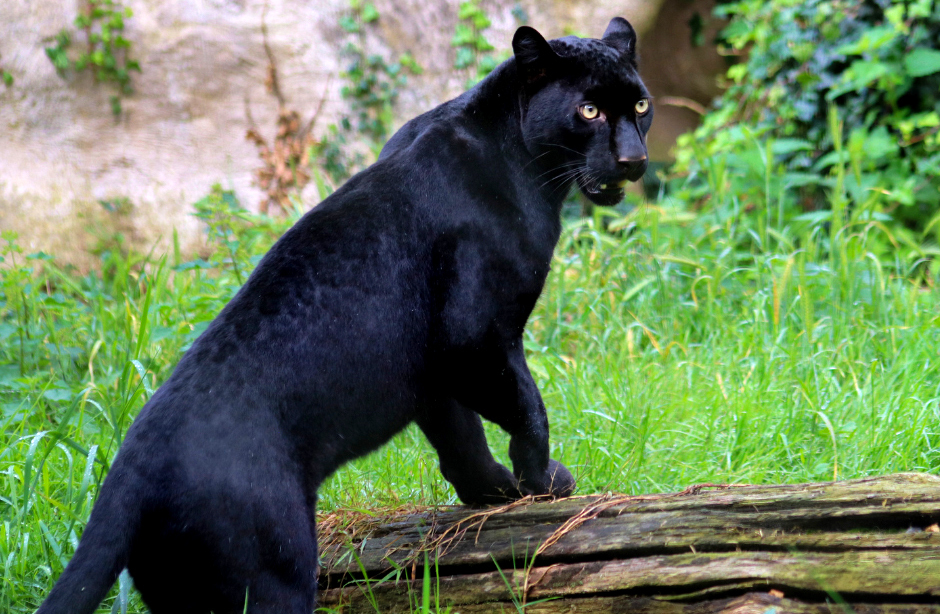
Are snow leopards smaller than leopards?
Yes, snow leopards are generally smaller than leopards.
While leopards can weigh between 50 to 90 kilograms (110 to 200 pounds), snow leopards typically weigh between 23 and 41 kilograms (50 to 90 pounds). Snow leopards also have shorter bodies, longer tails, and thicker fur, which helps them stay warm in their cold habitats.
Unlike leopards, snow leopards have a more rounded face and lack the prominent pattern that we see on a leopard’s coat.
Are leopards or pumas bigger?
Leopards and pumas (also called mountain lions, catamounts, cougars, or panthers) are similar in size, but pumas are generally larger. Pumas can weigh between 29 to 100 kilograms (64 to 220 pounds), while leopards typically range from 50 to 90 kilograms (110 to 200 pounds).
Leopards are more muscular and compact, with stronger limbs for climbing and carrying prey into trees. Pumas have a leaner build and longer legs, built for speed and agility rather than raw strength.
Our work
IFAW is dedicated to protecting leopards and ensuring their survival in the wild. From rescuing individual leopards in crisis to supporting long-term conservation efforts, IFAW works across different regions to safeguard these incredible big cats.
In Ukraine, IFAW helped rescue Brave, a young leopard caught in the illegal pet trade. Trapped in a war zone, Brave faced an uncertain future, but thanks to IFAW’s support, he was safely relocated to a sanctuary in Spain, where he now receives proper care.
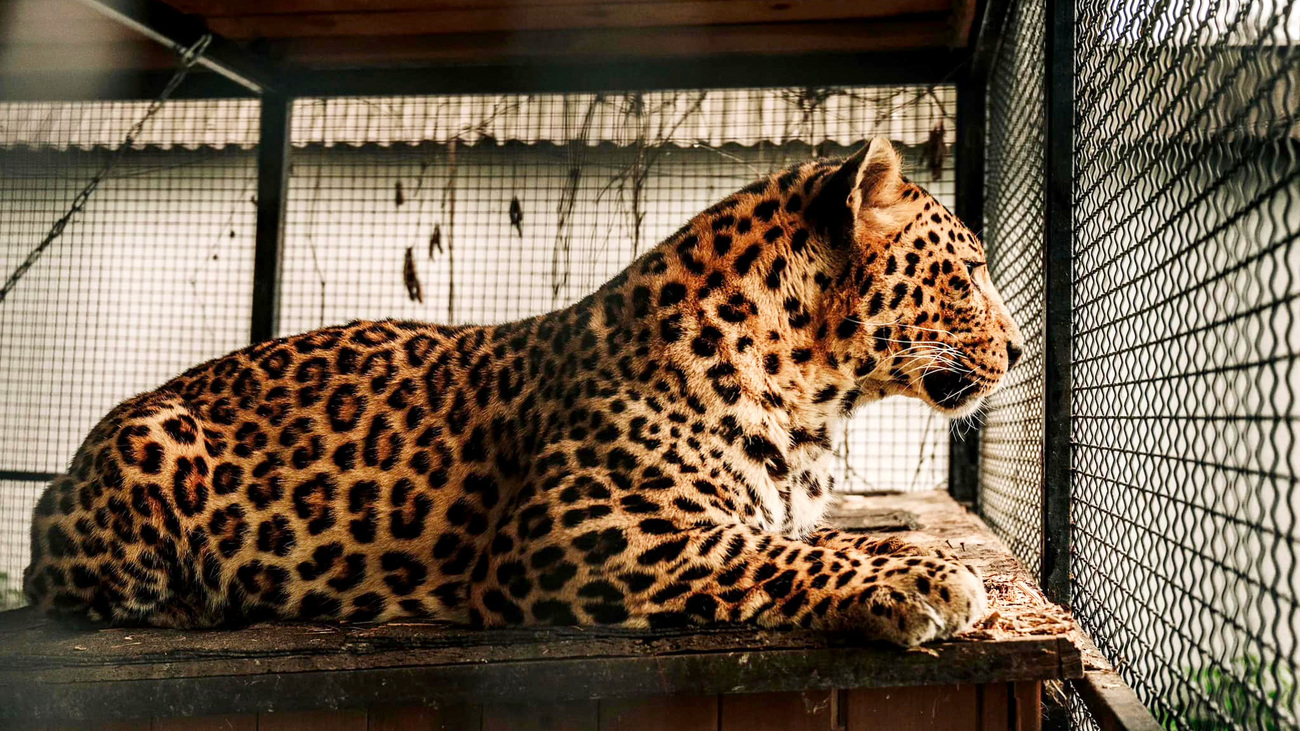
Born during the war, Kiara the black leopard was rescued from wildlife trafficking as a cub by our partner Wild Animal Rescue. Thanks to IFAW and its partners, she was evacuated and placed temporarily at Tonga Terre d'Accueil in France. Kiara was then transferred to her permanent home at the Refuge de l'Arche. Too acclimated to humans, she cannot survive in the wild. This sanctuary will offer Kiara the best quality of life, where she will be safe and benefit from an enclosure and care adapted to her needs.
We also support leopard rescues in India. In April 2022, a farmer in Uttar Pradesh stumbled upon a leopard amongst his crops. Alongside Uttar Pradesh Forest Department, IFAW’s partner Wildlife Trust of India (WTI) also found five newborn cubs nearby. The Forest Department cordoned off the area and set up shade nets to protect the cubs from heat. WTI deployed cameras to keep an eye on the cubs. Over the next few days, the mother collected her young and brought them to safety, including one that required veterinary care. This successful reunion wouldn’t have been possible without the efforts of farmers and the support of a whole village.
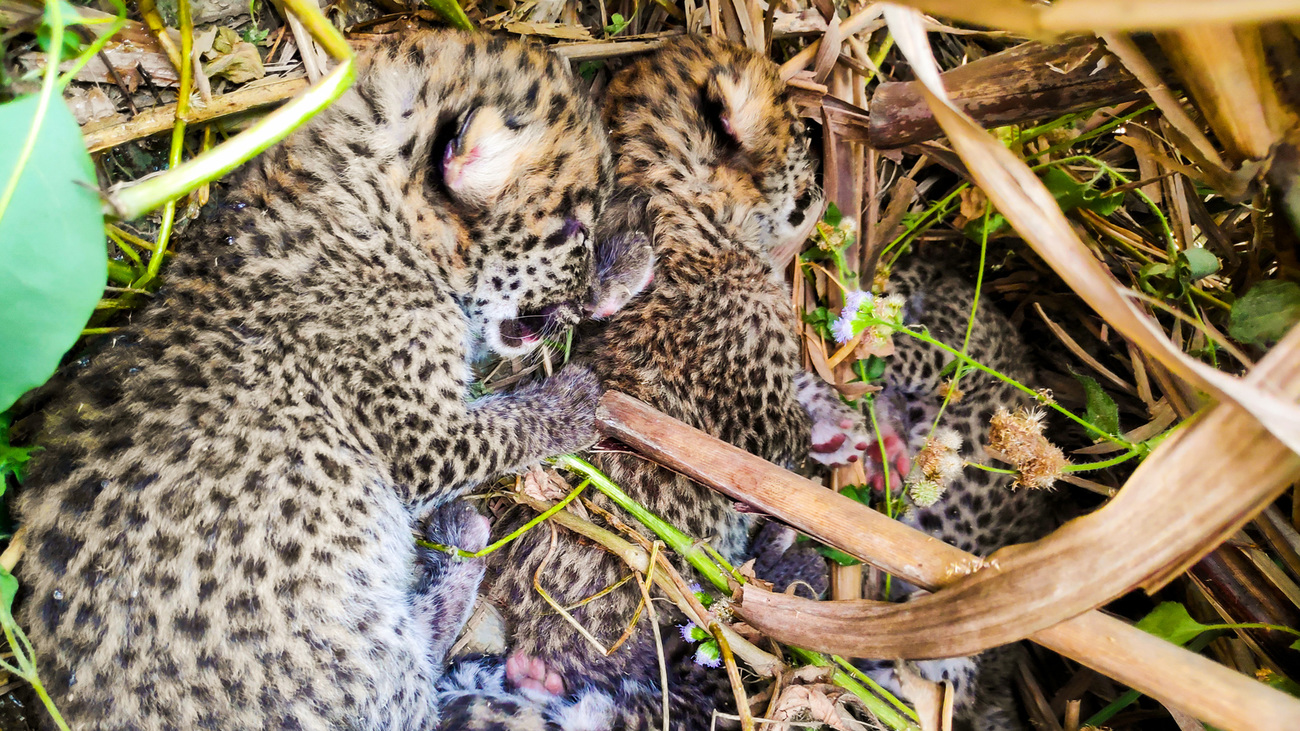
In May 2021, WTI responded to a call about a month-old leopard cub stuck in a small trench in Assam, India. After treating the cub for dehydration, they placed it in a box with bedding material and put small holes in the sides, allowing the mother leopard to track her baby. Ensuring the cub stayed hydrated, the team waited nearby until the mother came back for her cub. The operation took only 12 hours, minimising the time of separation between the two—an important contributing factor for a successful reunion.
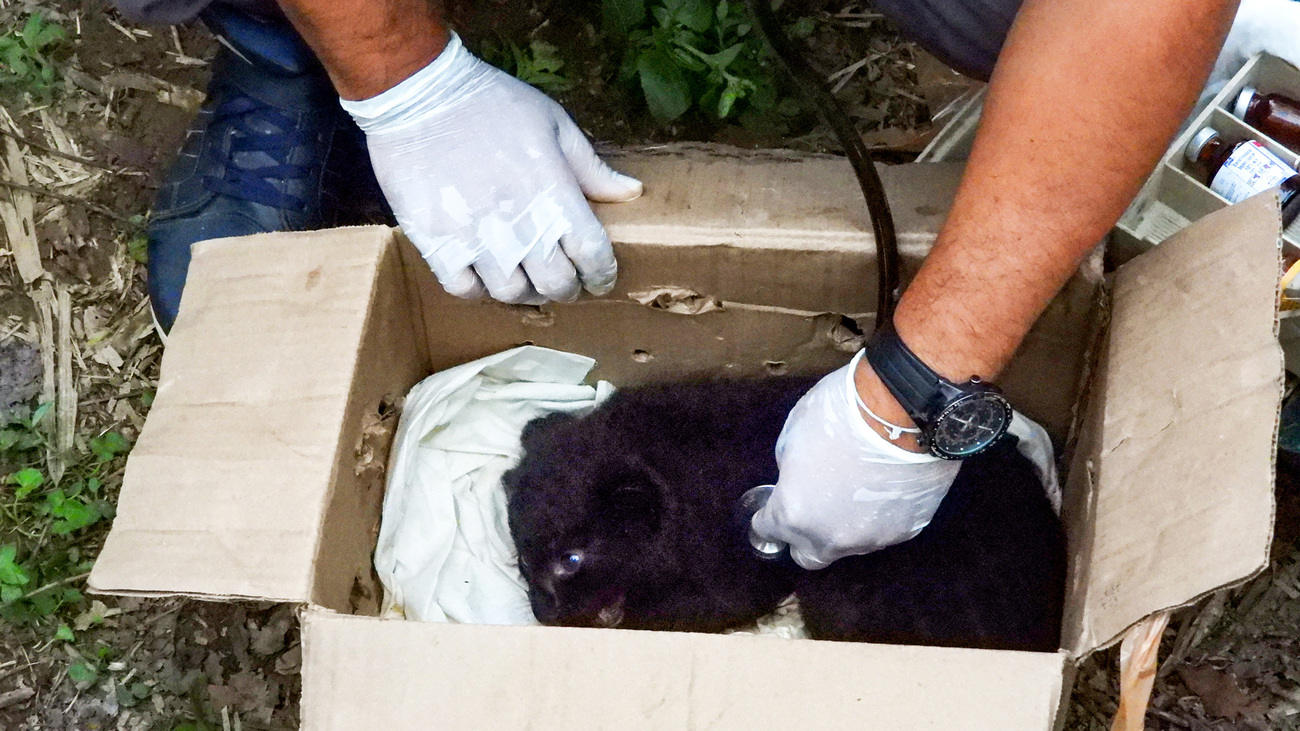
We also supported a 2018 operation where a leopard was safely removed from a human settlement. With habitat loss pushing leopards closer to people, such rescues are becoming more frequent, which is why intervention is so important.
IFAW collaborates with local communities, conservationists, and authorities in South Africa to create safer habitats for leopards and other wildlife, ensuring they can roam freely without the dangers of poaching or habitat destruction. IFAW also supports the Cape Leopard Trust, which focuses on research, conservation, and education to protect the Cape Leopard, a unique and vulnerable population living in South Africa’s mountain areas.
Through these efforts, IFAW is helping to secure a future for leopards, ensuring they continue to thrive in the wild where they belong.
How can you help?
Leopards face an uncertain future. With your help, IFAW can continue protecting these amazing big cats and other wildlife around the world.